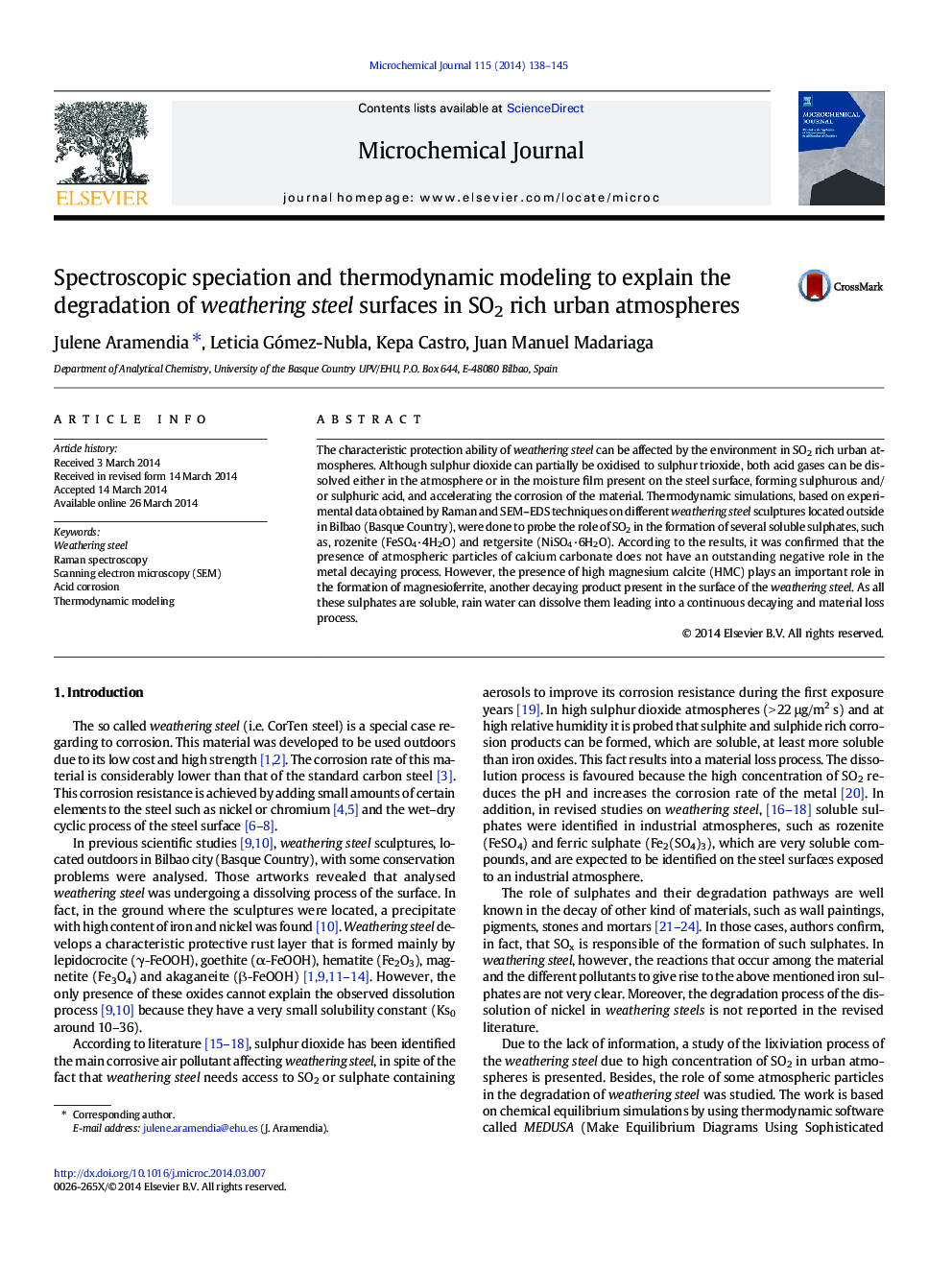| Article ID | Journal | Published Year | Pages | File Type |
|---|---|---|---|---|
| 7643060 | Microchemical Journal | 2014 | 8 Pages |
Abstract
The characteristic protection ability of weathering steel can be affected by the environment in SO2 rich urban atmospheres. Although sulphur dioxide can partially be oxidised to sulphur trioxide, both acid gases can be dissolved either in the atmosphere or in the moisture film present on the steel surface, forming sulphurous and/or sulphuric acid, and accelerating the corrosion of the material. Thermodynamic simulations, based on experimental data obtained by Raman and SEM-EDS techniques on different weathering steel sculptures located outside in Bilbao (Basque Country), were done to probe the role of SO2 in the formation of several soluble sulphates, such as, rozenite (FeSO4·4H2O) and retgersite (NiSO4·6H2O). According to the results, it was confirmed that the presence of atmospheric particles of calcium carbonate does not have an outstanding negative role in the metal decaying process. However, the presence of high magnesium calcite (HMC) plays an important role in the formation of magnesioferrite, another decaying product present in the surface of the weathering steel. As all these sulphates are soluble, rain water can dissolve them leading into a continuous decaying and material loss process.
Keywords
Related Topics
Physical Sciences and Engineering
Chemistry
Analytical Chemistry
Authors
Julene Aramendia, Leticia Gómez-Nubla, Kepa Castro, Juan Manuel Madariaga,
